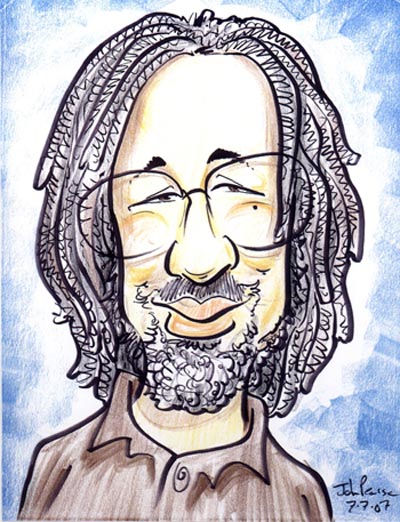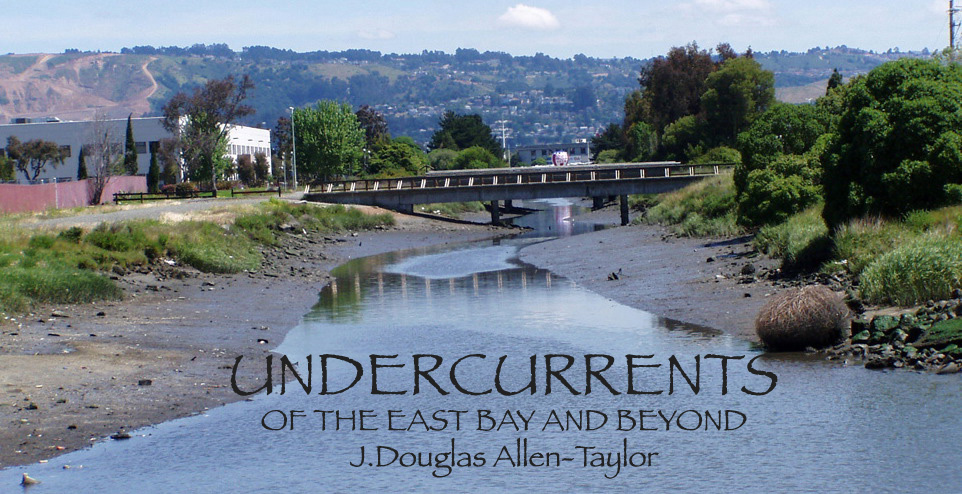|
|
OAKLAND'S PUBLIC SAFETY "CRISIS"
August 28, 2008
Oakland is facing a chickens-coming-home-to-roost summer, where years of official and unofficial neglect of the root causes of crime are now surfacing into what some members of the public, politicians, and elements of the media are labeling a public safety “crisis.”
This is an enormously complicated and sensitive subject, so toxic that few—if any—Oakland public officials are going to address it head-on. But if we as a city are going to work our way out of this problem in Oakland, we are going to have to have an honest, serious, and adult discussion about the sources of the problem and those things that continue to divide us and keeping us from working in a common effort on short-term and long-term solutions.
I put the word “crisis” in parentheses, not to belittle the situation, but to emphasize that this is where the disagreement begins. It is, therefore, the appropriate place to begin to divide the question and sort our the sources of the problems, both in our communities and in our own collective minds, beliefs, and attitudes.
The first questions to settle are: is Oakland currently in a public safety “crisis?” Who and what determines when we are in such a “crisis?” And if we are currently in a public safety “crisis,” what are the component parts that define the current situation?
The public safety “crisis” is not like those declarations of emergencies that the Oakland City Council regularly passes over AIDS or medical cannabis, or that the governor or president proclaims when some major disaster—human-caused or natural—occurs. No official or legislative body is empowered to declare a public safety “crisis” in Oakland. It appears to be a confluence of events, of public opinion—expressed both in conversations in homes and on the streets and in blog entries and internet discussion—a concentration of both media and organization attention on a single set of circumstances, and resulting response by public officials. While various components can help drum us up into the status of such a “crisis,” no individual entity can create a state of “crisis” by itself.
By this standard, Oakland is currently facing a public safety “crisis.” There appear to be three events that have led us to this situation. The first is Oakland’s long-time unresolved problem of crime and violence that stretches over several years. The second is the two-year spike in violent crimes and homicides. The third is the summer’s rash of restaurant takeover robberies.
By themselves, any one of these situations would have provoked some sort of attention and response by the city and its residents. Taken together, they have reached that point where the strain on the city’s social tectonic plates has become so severe, the pressure of magma so great, that the tenor of the city has come together in an overflow of demands that “something must be done.”
This is where the issue divides, and where we have to examine it most carefully.
The tipping point that has pushed this into a full-blown public “crisis” appears to be the restaurant takeovers, which have occurred either in Oakland’s more affluent neighborhoods—such as Rockridge or Grand Avenue/Lakeshore—or in those neighborhoods that are on the border between middle class and underclass.
I struggle not to be misunderstood here.
I dine out—and sometimes take my friends and family members—to areas of the city where some of the recent takeover robberies have occurred. Some of my friends are owners and workers at the Nomad Café, which is just down the street from the Daily Planet offices and one of the sites of a recent takeover robbery. For reasons that should be obvious from reading the above, I want those robberies stopped.
But I also note that so far we have been lucky, and most of the takeover robberies have not resulted in serious injury. That does not seek to minimize them or suggest that they should somehow be “acceptable” parts of the Oakland experience, but only to emphasize that there are far more dangerous situations in the city.
One of the centers of Oakland’s violence has been among African-American youth, and this has been the situation at least since I was raising three of my daughters in the city through the 90’s. I feel for the people who worry about their safety while dining in Oakland residents. But I also know that for at least the past twenty years, Oakland’s African-American youth have not felt entirely safe attending social events in the city. From hip hop concerts to nightclubs to house parties to sports events to get-togethers in city parks, many such events have been broken up by fights and gunfire. For many of the youth of our city, their entire teenage and early adult years have been lost. For far too many, their lives have been lost. What has also been lost in the understanding of this situation is that the violence itself has been perpetrated by a relative handful of individuals, while the vast, vast majority of these youth only want to go out and have a good time without the attending drama, and to come back home safe and sound.
No citywide feeling of public safety “crisis” has seemed to emerge from this situation, which many—too many—seem to feel is simply part of Oakland’s landscape.
Where the city has mobilized a “solution” to the problem, it has been to attempt to eliminate gatherings of African-American youth altogether rather than find a way to make those gatherings safe. We once wrote about the HotBoyz hip hop concert at the Oakland auditorium where fighting broke out in the audience, and where Alameda County Sheriff’s deputies stayed inside to protect the building while driving innocent spectators out into the parking lot, where the fighting had spread and where some of the participants were going to their trunks for guns. For many years, we chronicled the situation in which Oakland police drove African-American youth out of nonviolent neighborhood social gatherings in East Oakland parking lots into the streets, thus creating the “crisis” that became the illegal street sideshows. When problems erupted with some African-American youth outside the Festival at the Lake or at the tail-end of Carijama, Oakland police and Oakland public officials simply ended the events, rather than come up with a solution that both kept the events and kept the vast majority safe, including the African-American youth who were not participating in any of the problems.
In the meantime, Oakland is currently in the midst of gang warfare between various gang factions centered in the Latino community. A year ago, Oakland Police Chief Wayne Tucker reported to the public that Latino gang warfare accounted for a large portion of Oakland’s ongoing violence. We know that an unknown number of Oakland’s Latino youth have been attacked on the city’s streets—some of them killed—because they were mistakenly identified as members of a rival gang. What horror it must be for Latino kids to walk Oakland’s streets, knowing that their lives are in such danger? To either a greater or lesser degree of success, Oakland has initiated a crackdown on these Latino gangs. But has the public safety concerns of the city’s Latino youth—far more serious and prevalent than that experienced by the city’s restaurant patrons—shocked us enough to mobilize the city into a declaration of “crisis”?
It has not.
I mention the problems surrounding the city’s African-American and Latino youth only as the most obvious beginning example. The roots of the current problem clearly go deeper and farther than that.
I want the restaurant takeover robberies to stop. I must repeat that, because I know that there will be the usual gaggle of bloggers who will suggest otherwise, and that I am suggesting that the city turn a blind eye to such crimes. But what worries me is that once those robberies ease up or end—either by the capture of the perpetrators or by such an increase in police presence that they are encouraged to go elsewhere—that the city’s sense of a public safety “crisis” will ease, and the bulk of our attention will go elsewhere.
To begin to solve Oakland’s public safety and crime and violence problems, we have to stop the cycle of crisis management—where our attention ebbs and flows like the tide on an ocean beach—and to approach it, instead, as a long-term situation which will not be ended overnight, but must be attacked steadily, diligently and intelligently with results that may or may not be seen in our generation.
Mayor Dellums is the only Oakland leader or institution with the reach long enough to bring in all of the city’s factions, institutions, and neighborhoods to begin such a multi-phase effort. To his enormous credit, Mr. Dellums has begun to introduce component parts of such an effort through his administration, both on the law enforcement side and the social causes side. But for the most part, the mayor has done this without involving Oakland’s general community in the effort, so that large portions have gone off on their own track, or been either left out altogether.
My hope—and suggestion—is that Mr. Dellums start at the point he promised us in his State of the City address last January, with a citywide public safety dialogue. Not a press conference. Or a couple of meetings. Or a series of pronouncements fueled by the latest concern. But a serious effort—such as took place with the Mayoral Task Forces or the Blue Ribbon Housing Commission—to involve a broad swath of Oakland residents, organizations, and institutions in a beginning dialogue on two pressing topics.
What is the nature and the causes of Oakland’s crime and violence?
What is the program for a solution, both immediate, and in the long term?
Unless and until we settle those issues, any city or community action or reaction is only going to be furtive, limited, and ultimately unsuccessful.
|

